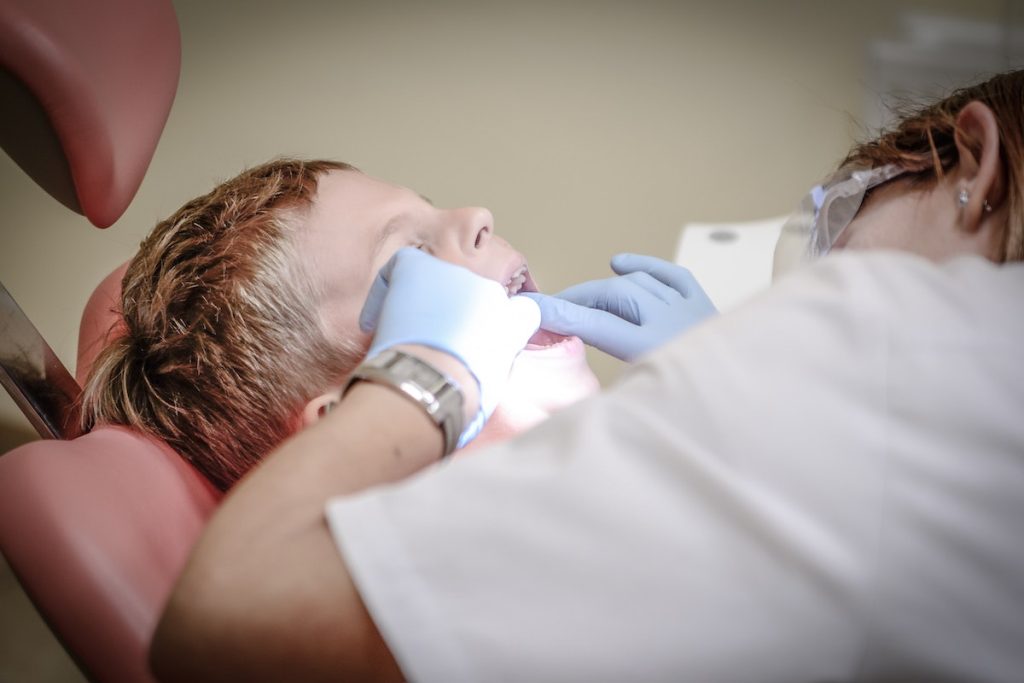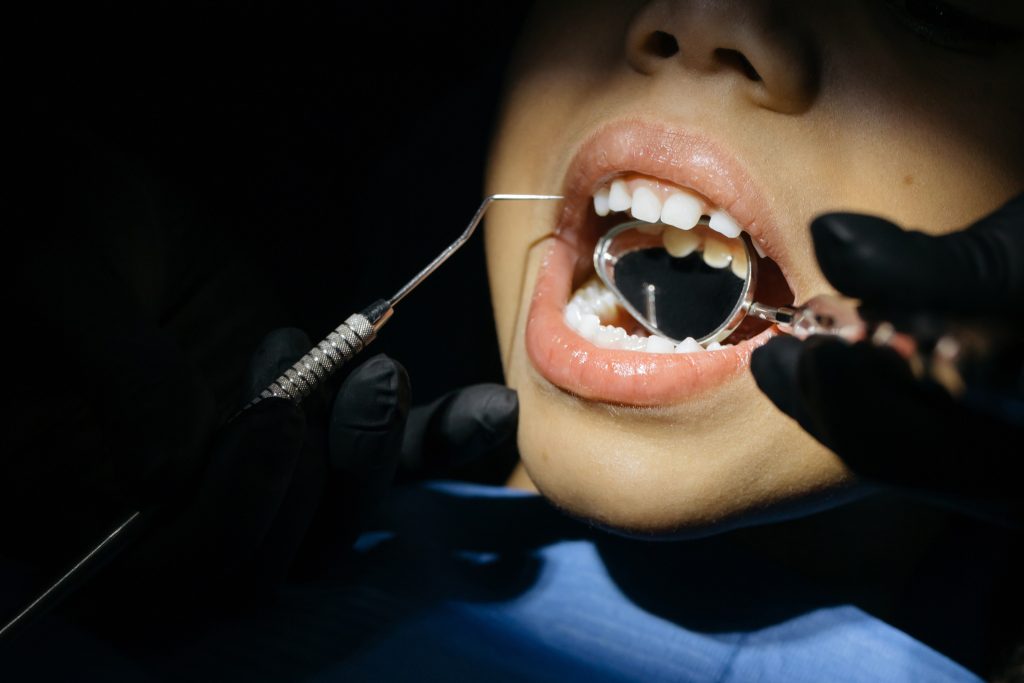Your child’s dentist says they have a cavity at their six-month checkup. You may be surprised because you thought cavities were only something that happened to adults. However, although cavities are more common in adults, children can get them too. In fact, according to the Centers for Disease Control and Prevention (CDC), more than half, or 52% of children aged 6-8 years, have had cavities in their baby teeth.
Here’s what you need to know about cavities in children and their causes, prevention, and treatment.
What causes cavities in children?
The main cause of cavities is plaque. Plaque is a somehow sticky film comprised of food debris, saliva, and some types of bacteria. When plaque is not removed, it turns into tartar (dental calculus). Tartar is hard and can only be removed by a dental professional. If plaque and tartar are not removed, they will destroy the tooth’s enamel, resulting in a cavity.
Cavities are more common in children who have certain risk factors such as poor oral hygiene, insufficient fluoride exposure, dry mouth, frequent snacking or sipping on sugary drinks, eating disorders, and medical conditions such as acid reflux. Children who have braces or other dental devices are also at an increased risk for cavities because it is difficult to keep these areas clean.
In addition, children from lower-income families are more likely to develop cavities. This is because they often have less access to dental care and may not have insurance that covers dental services.
In essence, cavities are caused by a combination of poor oral hygiene and a diet high in sugar. However, there are other factors that can contribute to the development of cavities in children.
How can cavities in children be prevented?
The best way to prevent cavities is to practice good oral hygiene habits at home and ensure that your child visits the dentist regularly for checkups and cleanings.
During at-home oral care, help your child brush their teeth thoroughly twice a day using fluoride toothpaste. It’s also important to floss daily to remove plaque between the teeth and beneath the gumline, which toothbrush bristles cannot reach.
Restricting sugary snacks and drinks, especially between meals, and eating a balanced diet can also help protect your child’s teeth from cavities. Meanwhile, using fluoride treatments and sealing off developing teeth with dental sealants could help remineralize the teeth and prevent cavities from developing.
Regardless of how well you take care of your child’s teeth at home, it’s still important to take them for dental checkups and cleanings at least twice a year. At the dental office, the dentist or dental hygienist will remove any plaque and tartar buildup and check for early signs of cavities.

How Are Cavities Treated in Children?
Once a cavity has formed, it cannot be reversed. The goal of treatment is to stop the progression of decay and restore the tooth back to its normal function and appearance.
The type of treatment recommended will depend on several factors, such as the size of the cavity, how close it is to the nerve of the tooth, your child’s age, how cooperative they are during treatment, and your budget.
Common treatments include fillings (composite resin or amalgam), artificial tooth implants and crowns, root canals, and extractions.
1. Fillings:
Composite resin fillings are made of a tooth-colored material that is matched the color of your child’s natural teeth. Composite resin fillings are less visible than silver amalgam fillings and can be used on teeth that are visible when your child smiles.
2. Artificial Tooth Implants:
Dental implants are titanium posts that are surgically placed into the jawbone to replace the root of a missing tooth. Once the implant has bonded with the jawbone, a dental crown is placed on top to replace the tooth’s visible portion.
3. Root Canal:
A root canal is a treatment to repair and save a tooth that has been decayed or infected badly. The procedure starts by removing the damaged pulp or the soft tissue found inside the tooth, before disinfecting and cleaning the interiors of the tooth, and then filling and sealing it.
4. Extraction:
In some cases, the tooth may be so damaged that it needs to be extracted. This is usually a last resort and is only done if the tooth cannot be saved with other treatments.
In some cases, your child may need more than one type of treatment to restore their tooth fully. The recovery time for dental treatments will vary depending on the procedure that was performed.
After treatment, it’s important to practice good oral hygiene habits at home and visit the dentist regularly for follow-up appointments to ensure that the cavity does not return.
Final Thoughts:
Cavities in children are relatively common but can be prevented with good oral hygiene habits at home and regular dental visits. If your child develops cavities, several treatment options are available depending on the extent of the damage. Just make sure to do your best to prevent this in the first place by raising your child with proper dental habits.
